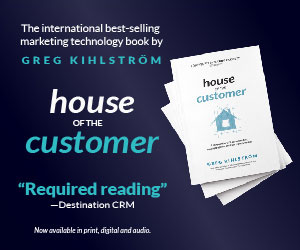This article was based on the interview with Liz Spranzani, CTO at Verndale by Greg Kihlström, MarTech keynote speaker for The Agile Brand with Greg Kihlström podcast. Listen to the original episode here:
In the world of marketing technology and customer experience, there has been a lot of talk about headless solutions and their benefits. However, it’s important to understand that headless is not always the right fit for every situation. In this podcast transcript, Greg Kihlstrom and Liz Spranzani discuss the differences between headless and traditional approaches and when each one is appropriate.
Headless solutions refer to a decoupled architecture where the front-end presentation layer is separated from the back-end content management system (CMS). This means that the content and data are stored separately from the presentation layer, allowing for more flexibility and scalability. With headless, developers have the freedom to choose the technology stack for the front-end, such as React or Angular, and can easily integrate with various platforms and devices.
On the other hand, the traditional approach involves a monolithic architecture where the CMS and front-end are tightly integrated. The CMS controls both the content and presentation, limiting the flexibility to make changes and adapt to new technologies. This approach is often used for smaller websites or when there is less need for customization and integration with other systems.
While headless solutions offer many advantages, such as faster development cycles, improved performance, and better scalability, they may not be the right fit for every organization. Liz Sprenzani points out that a more nuanced approach is needed, considering factors like the complexity of the project, the organization’s technical capabilities, and the need for customization.
In some cases, a traditional approach may be more suitable, especially for smaller organizations with limited resources or less complex requirements. Traditional CMS platforms provide an all-in-one solution that is easier to manage and maintain. They offer built-in features for content creation, management, and presentation, making it more accessible for non-technical users.
However, for larger organizations with complex requirements and a need for flexibility, headless solutions can be the ideal choice. They allow for seamless integration with other systems, enable omnichannel experiences, and provide the freedom to choose the best technology stack for the front-end.
Another aspect discussed in the podcast is the role of low code or no code solutions in website redesign. These tools empower non-technical users to make changes and updates to the website without relying on developers. They offer a visual interface and pre-built components that can be easily customized and configured. Low code or no code solutions can greatly speed up the development process and reduce the reliance on technical resources.
Headless solutions offer great advantages in terms of flexibility, scalability, and integration capabilities. However, they are not always the right fit for every organization. A more traditional approach may be suitable for smaller organizations with simpler requirements. Additionally, low code or no code solutions can empower non-technical users to make changes to the website and speed up the development process. It is important for organizations to carefully evaluate their needs and capabilities before deciding on the best approach for their website redesign.











